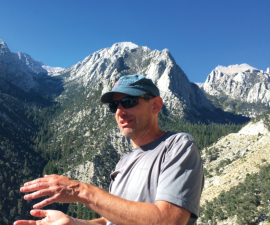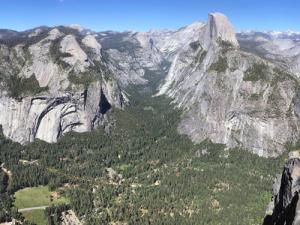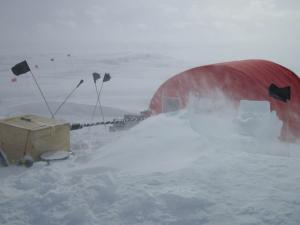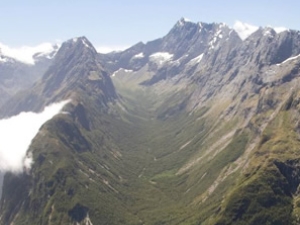

Research Bio
The global physical environment is a vast and complex machine composed of numerous interconnected systems capable of dramatic change over brief intervals of time. A solid understanding of the character and dynamics of this machine can explain a diversity of engaging geographical phenomena, from the aesthetically stunning views on a high Sierra Nevada mountain summit to the devastating loss of life and property resulting from land-slides and floods.
The purpose of Professor Cuffey's scholarship is to design, improve, evaluate, and enjoy such explanations. Two complementary approaches in this pursuit are:
- To achieve a rigorous physically-based understanding of environmental processes and system dynamics.
- To reconstruct the remarkable "natural experiments" of Earth's environmental history.
Professor Cuffey uses both approaches. Constraints on time, technology, and brainpower have forced Professor Cuffey, like most scholars, to the bittersweet reality of specialization; his research efforts emphasize environmental change of polar regions, with a focus on glaciologic problems. The choice of polar glaciology reflects the unique and powerful contributions that this subdiscipline makes to environmental change research. Ice core reconstructions of environmental history offer the most comprehensive, varied, and high-resolution view yet achieved of past environments. The ice sheets themselves are a major control on global sea level and albedo, and on high-latitude atmospheric and oceanic circulations, and on physical landscape characteristics. No other topographic features of this size and importance are changeable on such short time scales.
Professor Cuffey uses a quantitatively rigorous blend of geophysical and geochemical techniques to address questions that are important in this context:
- How have climatic temperature and atmospheric greenhouse gas concentrations covaried in the past?
- What is the tempo and magnitude of climate changes in polar regions?
- What determines the isotopic composition of precipitation?
- How have the great ice sheets changed in the past, and how will they change in the future? How do they flow?
- How do glaciers erode bedrock landscapes?
- What was the net effect of Pleistocene glaciation on topography?
In addition to these major research themes, he also works on other aspects of geomorphology.
Research Expertise and Interest
continuum mechanics, climate, geomorphology, glaciers, glaciology, climate history, stable isotopes, geographical thought
In the News
How Old is Yosemite Valley?
During last period of global warming, Antarctica warmed 2 to 3 times more than planet average
Novel technique reveals how glaciers sculpted their valleys
Using a new technique called thermochronometry, UC Berkeley and Berkeley Geochronology Center scientists have detailed the 2.5 million year history of the beautiful and distinctive U-shaped glacial valleys of Fiordland National Park in New Zealand.



